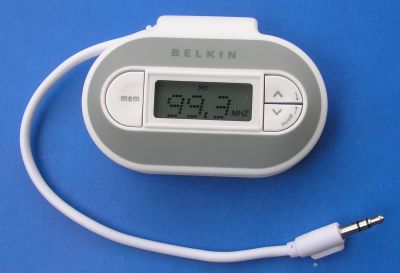
Belkin Tunecast 2 mod
Extending the range of the Belkin Tunecast II

Iím always looking for a good quality FM transmitter to play my MP3ís or whatever and came across the Belkin tunecast 2. This is a cool toy, the fact that it has a phase locked loop and can be tuned anywhere in the FM band with a big radio station sound. The question is how about the battery life and how far will it transmit?
They claim it lasts up to 10 hours so when putting in a new set of AAA batteries the current reads about 100 milliamps then as the batteries drain, goes up to maybe 200 milliamps then quits. This is because the voltage is stepped up and regulated to 4.5 Volts inside the unit. This gives steady performance until the batteries are dead but AAA batteries are quite small and I don't think they have this much energy in them. Does anyone want to verify this? Larger AA or even D batteries would work much better.
Another bad thing is the 1.5 milliamp continuous current drain while it's off would drain the batteries if left sitting in storage in about 3 weeks. They would become totally drained and would eventually leak and ruin the unit. You must remove the batteries whenever it's not being used even if only a few days. It might as well not have a place to put the batteries with a flaw like this. Since I know you've been looking at this web page, you guys at Belkin need to figure out better ways to conserve energy in portable devices..
There is an external power jack for automotive use marked DC input 12V 200ma, a total of 2.4 watts. Are they lying? You won't quite need a diesel generator but the battery pack from your Intel Centrino laptop might not be big enough. Connecting a variable DC power supply with a meter shows it's only 41mA at any voltage. Not the 200 as marked on the unit. The DC input can be anywhere between 7 and 14 volts because it goes directly to a 5V regulator inside. Any kind of external regulation is not needed, so if operating from AC power A 9V 200ma unregulated wall transformer works best. Don't use one rated for12V because there is an increase in voltage when not fully loaded which might exceed the rating of the 5V regulator. For example an old cordless phone adaptor is usually 9V and would work perfectly with the proper end on it.
The signal strength is a little lacking and even at only 30 feet away gives fading and static. Why is the signal so week this close to the unit? The FCC says only 150uV/meter at 10 meters is allowed so Iím guessing any more power than what this has could not be FCC certified and sold at retail outlets nationwide.
Older gray colored versions of the Tunecast lose their memory settings and reset to 88.1 Mhz when power is lost. This wouldn't work while it's powered from a hard drive connector after doing a shutdown. It would need it's own AC adaptor plugged in all the time. The newer white ones are fixed.
Some good things are the phase locked loop, good sound, and the 12V input that eliminates the need for batteries. Best of all extending the range of the Belkin tunecast 2 for better reception is possible by adding an easy to build external RF amplifier.
The following is a theoretical exercise for educational purposes only, and not a definitive solution for boosting the tunecast output power to get better reception. It cannot be offered for sale. Performing this mod might damage the device and void the FCC certification. Any FCC violations or damages that result will be at your own risk. This mod should not be attempted unless you have the technical expertise and soldering skills needed for such a project. An ESD safe surface mount soldering station and microscope are required.
The first thing to do is disassemble the unit to see whatís inside then make some measurements.
Take off battery cover.
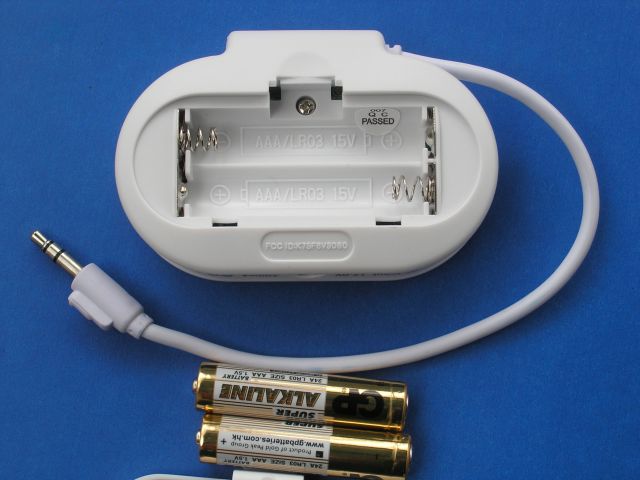
Remove screw and pop back cover off.
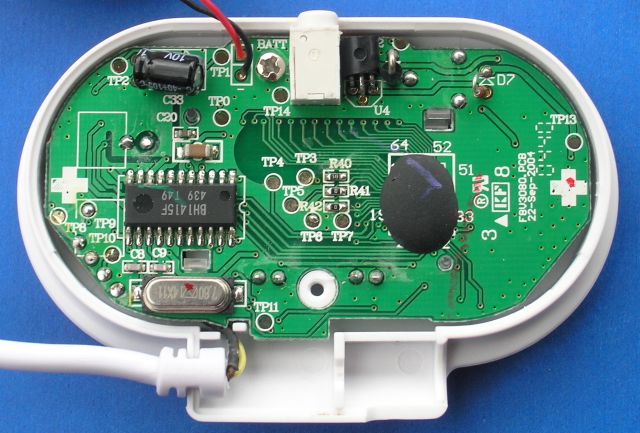
Remove second screw and circuit board comes out.
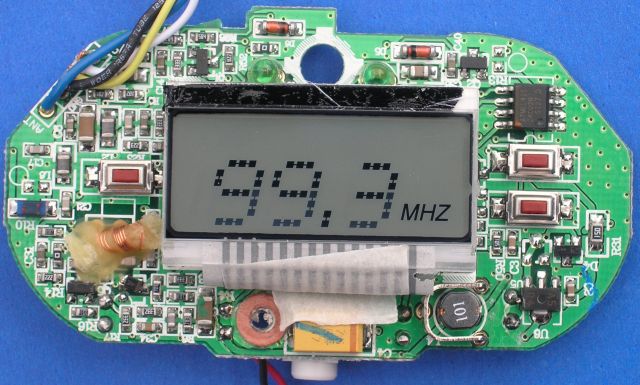
You can see the blue wire is used for the antenna and it's wrapped with the other wires in the audio chord. This would attenuate the RF radiation so a separate antenna wire lead would make a good first mod.
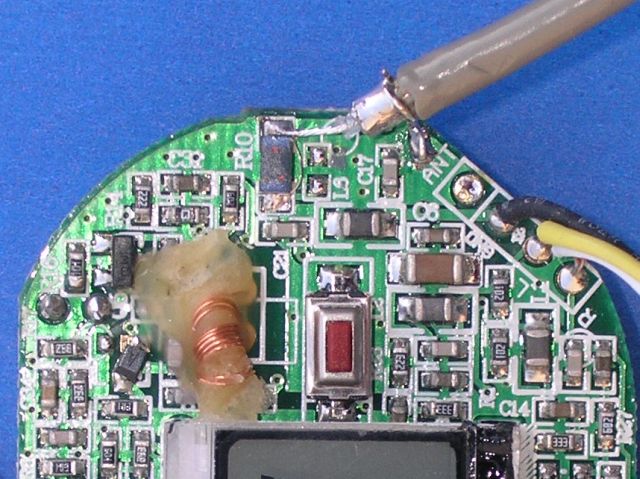
This image shows the blue wire cut, the blue inductor at the top shorted, and where the coax is attached. When the unit is assembled, the coax can be routed out the hole where the audio cable is stored. The measured signal level is -22dbm at 107.9 MHz and -15dbm at 88.1 MHz. That's not much power if you need it to go very far. Shorting the inductor as shown increases it to about -12dbm across the band, a little less than 1/10 of a milliwatt and you don't need it when driving 50 ohms. The coax can then be used to drive an external RF amp described here. It'll take allot of gain (at least 20db gain) to get any good range, but it's a nice stable stereo signal, and this amp will do the trick.
Here is an easy to build hand wired prototype RF amp that has up to 32 db of gain and is constructed on a piece of circuit board with ground plane on one side. The transistors are 2N5770 (similar to NTE108) and MRF515. These are listed on RF Parts http://www.rfparts.com/mototran.html#MRF502 for 2.95 each. The coils are made with #24 wire wound around a 3/16-inch diameter screwdriver blade. This photo shows a 2N5943 (similar to NTE77) in place of the MRF515 which has 2db less gain and 2db less max power output but still plenty of signal for around the house and it is more plentiful. The amplifier operates on 12 volts DC at 60 milliamps.


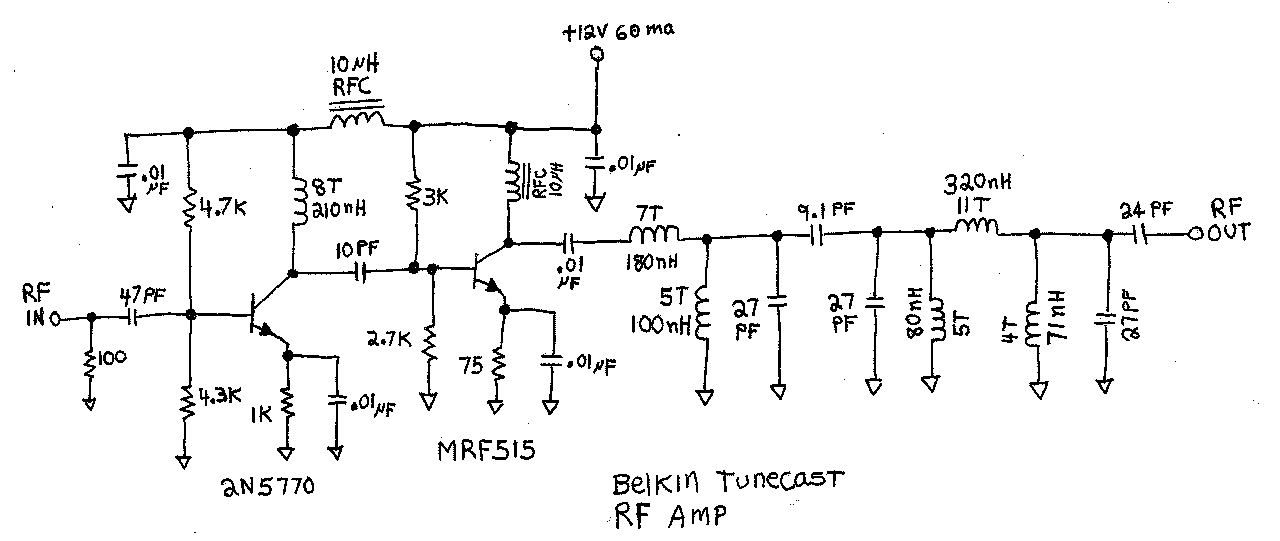
A network analyzer shows exactly whatís going on in an RF circuit and with a little tweaking of the components the hand wired amplifier is flat and has lots of gain. The filter on the output has a good flat band pass and good harmonic rejection. These plots were made with the better MRF515 output stage.
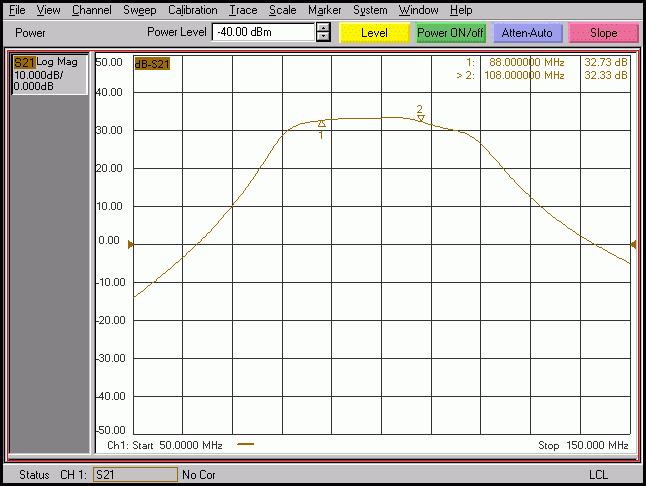
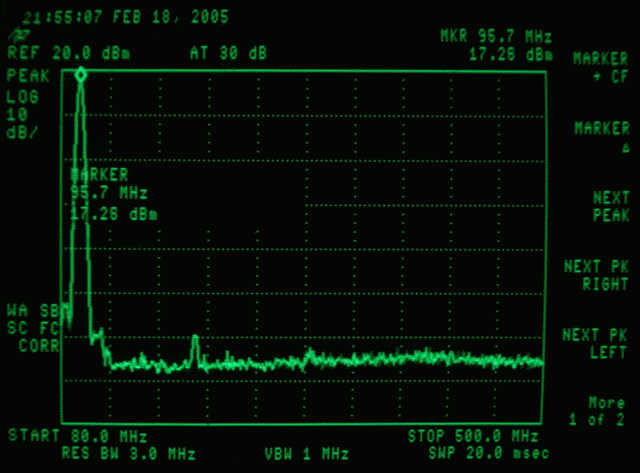
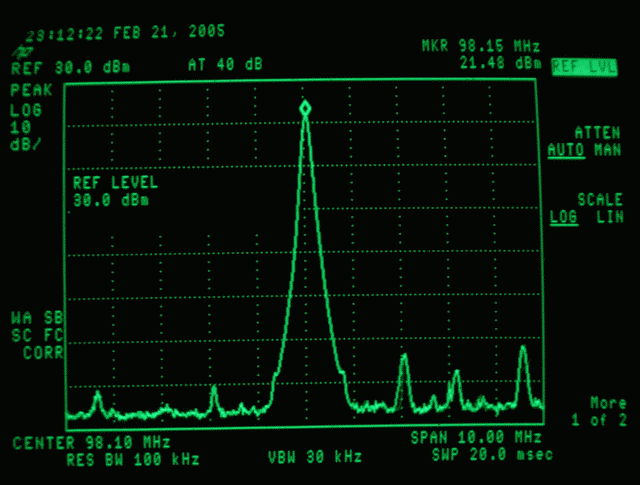
The second plot shows harmonics to be well suppressed by the filtering. Spurs seen in the third plot are present in the original un-amplified output and are probably generated by digital circuits in the BH1415 chip but are low enough not to cause any harmful interference aside from the main signal itself, and are amplified along with it. The marker reads 21.48dbm output power at the center frequency and it's good and strong in the kitchen. If there were going to be a $10,000 dollar fine or 6 months in jail, this would be the reason. Best just to stay with the original un-modified version.
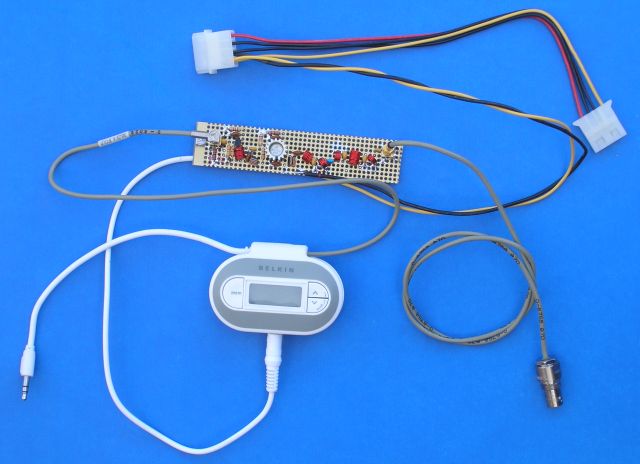
Example of a complete TuneCast system with all cables attached. RF output power is about 120 milliwatts. Although not verified with this setup previous road tests have shown this much power can be heard up to 3 miles away using an outside 1/2 wave vertical transmitting antenna.